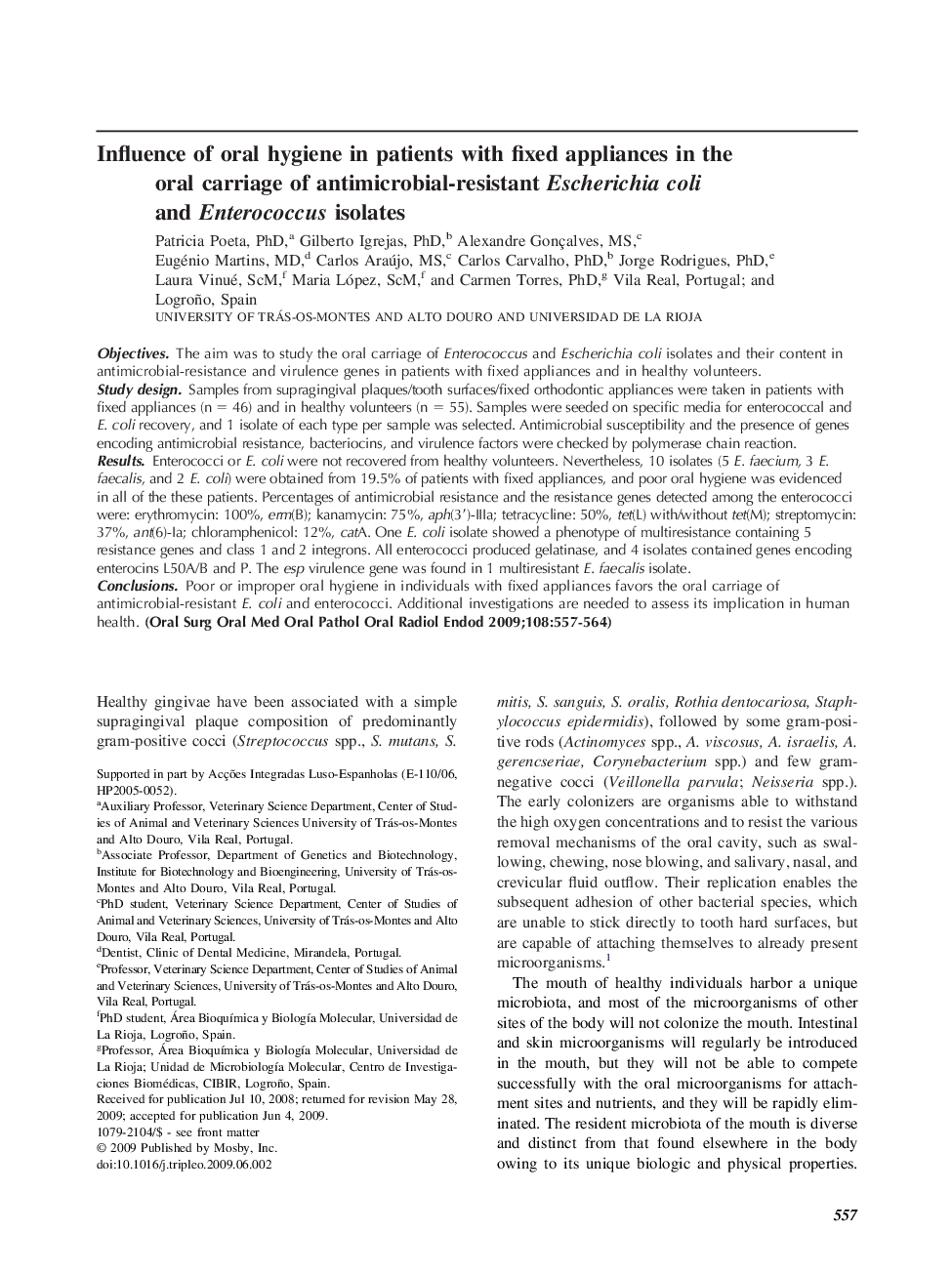| Article ID | Journal | Published Year | Pages | File Type |
|---|---|---|---|---|
| 3167921 | Oral Surgery, Oral Medicine, Oral Pathology, Oral Radiology, and Endodontology | 2009 | 8 Pages |
ObjectivesThe aim was to study the oral carriage of Enterococcus and Escherichia coli isolates and their content in antimicrobial-resistance and virulence genes in patients with fixed appliances and in healthy volunteers.Study designSamples from supragingival plaques/tooth surfaces/fixed orthodontic appliances were taken in patients with fixed appliances (n = 46) and in healthy volunteers (n = 55). Samples were seeded on specific media for enterococcal and E. coli recovery, and 1 isolate of each type per sample was selected. Antimicrobial susceptibility and the presence of genes encoding antimicrobial resistance, bacteriocins, and virulence factors were checked by polymerase chain reaction.ResultsEnterococci or E. coli were not recovered from healthy volunteers. Nevertheless, 10 isolates (5 E. faecium, 3 E. faecalis, and 2 E. coli) were obtained from 19.5% of patients with fixed appliances, and poor oral hygiene was evidenced in all of the these patients. Percentages of antimicrobial resistance and the resistance genes detected among the enterococci were: erythromycin: 100%, erm(B); kanamycin: 75%, aph(3′)-IIIa; tetracycline: 50%, tet(L) with/without tet(M); streptomycin: 37%, ant(6)-Ia; chloramphenicol: 12%, catA. One E. coli isolate showed a phenotype of multiresistance containing 5 resistance genes and class 1 and 2 integrons. All enterococci produced gelatinase, and 4 isolates contained genes encoding enterocins L50A/B and P. The esp virulence gene was found in 1 multiresistant E. faecalis isolate.ConclusionsPoor or improper oral hygiene in individuals with fixed appliances favors the oral carriage of antimicrobial-resistant E. coli and enterococci. Additional investigations are needed to assess its implication in human health.
